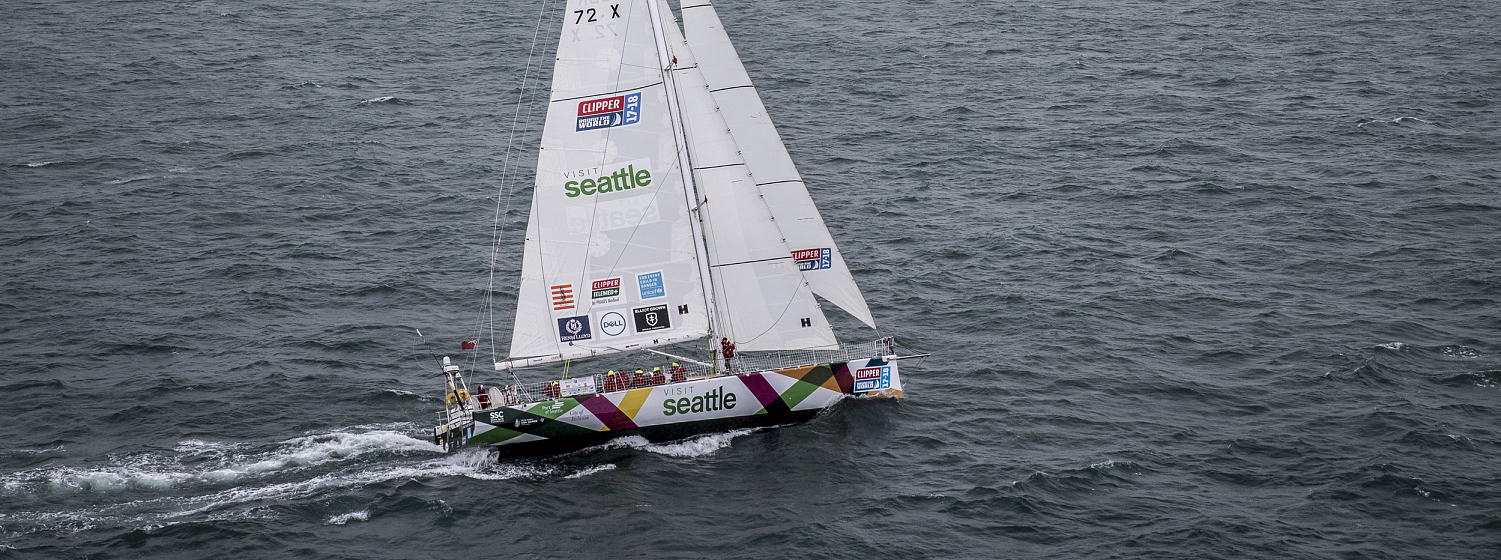Race 3 - Day 13
Crew Diary - Race 3 Day 13: Cape Town to Fremantle
13 November
The Spotter
Standing at the back of the boat, the Spotter is there to control, assist and if needed replace the person at the helm.
Standing he or she are not - they are usually scrambling to find somewhere to set foot and not slide across the deck, as they do not have access to the helm station platform.
Control is his main mission. When you are at the helm, he is the one who rather irritatingly breathes on your shoulder to spot any deviation from the desired course, with invectives like: “Too low by 5”, “Come up by 5”, “You are off course”, “Resist”, or the dreaded “Down! Down! Down!" when you are flying Code 1 a bit too high and are about to lose steerage, or “Up! Up! Up!" when you are about to accidentally get into irons in a windhole hole at night.
From the helm perspective, the Spotter is an ally in trying to avoid the ultimate showdown: a “call from doom”, ie a radio call from the nav station below by our skipper with comments such as: “Who is on the helm?”, “Could you guys please steer in a straight line?”, “PSP Logistics is doing 0.1 knots faster, why are you so slow?” which the Spotter will try and dodge with answers like “The wind just shifted”, “The wind just dropped”, “We were just hit by a big wave”, or “We just changed helm.”
The spotter's assistance to the helm include:
– Read out loud some compass bearing while the helm is steering by the stars, or in the middle of a delicate kite gybe a night
– Communicate key metrics on demand such apparent wind speed (AWS), apparent wind angle (AWA) and major shifts therein
– Pointing out to the Helmsperson a star in the sky corresponding to the desired course
– Taking temporarily the wheel
– Taking and delivery of the helm hot drinks orders
– Assistance in unpacking a cereal bar
– Pointing out an albatross, penguin or the occasional whale, the latter directly relevant to steering.
- Play a training role for crewmembers less experienced at helming.
You would think the Spotter was assigned that role because of an exceptional ability to read the wind, count wave periods, sense the heel of the boat, a unique wheel touch or trimming technique. Whilst this may be true, he is just as likely to be, like you, one of the first two who showed up on deck at watch change – but was just to slow to make it first on the “Highway to Helm”, a clear jackstay unencumbered by any of the outgoing watch tether clips (which we do keep clear at night for our skipper), straight from the companion way to under the traveller and onto the back of the boat.
Spotter is a popular role, as you just sit there, without the pressure of the helm, the physical demands of the pit, and unlike the bow and mast team, you stay dry. Perched at the back of the helm station, you look the business as if you were the afterguard, casting a distant but watchful eye on the 18 crew scrambling to make your 70 footer plough its furrow as fast as possible through the Southern Ocean.
